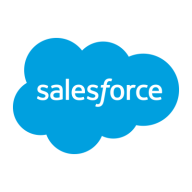

Tableau and MySQL are key players in the data visualization and database management categories, respectively. While Tableau shines in creating interactive visualizations, MySQL stands out for its robust database management capabilities.
Features: Tableau offers advanced data visualization capabilities with intuitive drag-and-drop functionality, real-time data integration, and R integration for statistical analysis. It also supports a wide range of visualizations, including maps and time series animations. MySQL, a popular relational database management system, provides robust performance, SQL support, and multi-threaded architecture. It integrates well with environments like LAMP/WAMP and Memcached, offering flexibility and scalability.
Room for Improvement: Tableau faces criticism for its high cost, complex pricing, and limited ETL capabilities. Performance issues with large datasets and limited predictive analytics are also noted. MySQL, while open-source and cost-effective, struggles with advanced database functionalities and has complex replication features. Its development and debugging tools are considered lacking by some users.
Ease of Deployment and Customer Service: Tableau provides diverse deployment options, including on-premises and various cloud configurations, and is praised for its customer support and community engagement. MySQL, typically deployed on-premises, benefits from its open-source nature and supportive community, though it lacks the formal customer service associated with commercial software.
Pricing and ROI: Tableau is often seen as expensive compared to competitors, though it offers significant ROI through its powerful visualization capabilities. It has various licensing models based on user roles. MySQL is free as an open-source solution, making it cost-effective for smaller organizations. However, larger enterprise solutions or advanced support licensing may incur additional costs.
This saves a significant amount of time, particularly for reports that would have needed around fifty people.
The ROI of using Tableau extends to its seamless integration across various platforms, as it's from Salesforce and thus not limited to any specific cloud provider.
Tableau is saving me time, money, and resources, which I would rate as ten.
We have no issues and usually receive timely responses.
They provide quick email and phone responses and have Thai-speaking personnel.
There should be consistent standards for all users.
The technical support for Tableau is quite good.
Meeting scalability requirements through cloud computing is an expensive affair.
Tableau is easy to use across various dimensions, whether on-premises or on the cloud.
The solution is fully scalable and performs well even with large datasets, provided there is proper supporting hardware.
Tableau is easy to scale.
We face certain integration issues, especially when we integrate the database with security solutions like IBM QRadar.
The application hangs after continuous use due to the buildup of cache.
I rate the stability a five or six because Tableau updates very often with new versions or patches.
It could be more beneficial if MySQL can enhance its data masking functionality in the same way it has improved data encryption.
Oracle could improve on scalability.
We cannot send the entire Excel file reports via email within Tableau.
The product owner should enhance its benefits or clarify its role.
It sometimes requires extensive investigation to determine why the data does not appear correctly.
Power BI as a much cheaper alternative.
A license for 150 users costs around $17,000 USD per year.
Looker is known to be quite expensive.
With Oracle, we have to buy another solution for encryption and masking, but MySQL supports native encryption, which enhances our return on investment.
It allows programming, writing stored procedures, creating views, constraints, and triggers easily.
A significant feature for me is the real-time connection to data sources because it effectively manages large data sets.
Tableau serves as a stable dashboarding tool for higher management, aiding in quick decision-making.
Building hyper extracts and visualization capabilities make Tableau a robust tool for data analysis.


MySQL is a cost-efficient and scalable relational database management system widely used in web, mobile applications, and academic projects.
MySQL is utilized for backend operations, data analysis, reporting, financial transactions, and ERP databases. It supports deployment on local servers, Cloud, and Kubernetes. Its free, open-source nature along with strong community support make it popular among companies. MySQL's compatibility with multiple platforms and programming languages enhances its appeal. While it remains stable and easy to use, areas such as replication, clustering, and backup require improvement to better serve enterprise applications. Enhanced security, error messages, and monitoring tools are also desired for a better user experience.
What are the most important features of MySQL?In multiple industries, MySQL supports internal applications, billing systems, academic teaching purposes, and ERP databases. Companies leverage MySQL for Cloud and local deployments, ensuring effective data manipulation and backend operations in diverse projects. Its role in financial transactions and reporting further emphasizes its versatility.
Tableau is a tool for data visualization and business intelligence that allows businesses to report insights through easy-to-use, customizable visualizations and dashboards. Tableau makes it exceedingly simple for its customers to organize, manage, visualize, and comprehend data. It enables users to dig deep into the data so that they can see patterns and gain meaningful insights.
Make data-driven decisions with confidence thanks to Tableau’s assistance in providing faster answers to queries, solving harder problems more easily, and offering new insights more frequently. Tableau integrates directly to hundreds of data sources, both in the cloud and on premises, making it simpler to begin research. People of various skill levels can quickly find actionable information using Tableau’s natural language queries, interactive dashboards, and drag-and-drop capabilities. By quickly creating strong calculations, adding trend lines to examine statistical summaries, or clustering data to identify relationships, users can ask more in-depth inquiries.
Tableau has many valuable key features:
Tableau stands out among its competitors for a number of reasons. Some of these include its fast data access, easy creation of visualizations, and its stability. PeerSpot users take note of the advantages of these features in their reviews:
Romil S., Deputy General Manager of IT at Nayara Energy, notes, "Its visualizations are good, and its features make the development process a little less time-consuming. It has an in-memory extract feature that allows us to extract data and keep it on the server, and then our users can use it quickly.
Ariful M., Consulting Practice Partner of Data, Analytics & AI at FH, writes, “Tableau is very flexible and easy to learn. It has drag-and-drop function analytics, and its design is very good.”
We monitor all Open Source Databases reviews to prevent fraudulent reviews and keep review quality high. We do not post reviews by company employees or direct competitors. We validate each review for authenticity via cross-reference with LinkedIn, and personal follow-up with the reviewer when necessary.